A rope of negligible mass passes over a pulley of a negligible mass attached to the ceiling, as shown in the figure. One end of the rope is held by a student of mass , who is at rest on the floor. The opposite end of the rope is held by a student of mass , who is suspended at rest above the floor. The minimum acceleration with which the student should climb up the rope to lift the student upward, off the floor, is
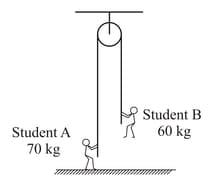


Important Questions on Newton's Laws of Motion I
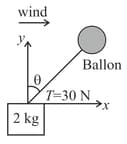
Two blocks and of equal mass are connected through a massless string and arranged as shown in figure. The wedge is fixed on horizontal surface. Friction is absent everywhere. When the system is released from rest,
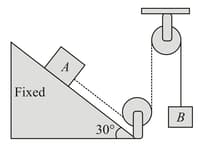
In the figure shown, all the surfaces are smooth. All the blocks , and are movable, -axis is horizontal and -axis is vertical, as shown. Just after the system is released from the position as shown,
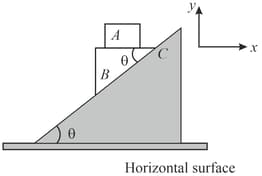
An ideal spring, with a pointer attached to its end, hangs next to a scale. With weight attached and in equilibrium, the pointer indicates on the scale, as shown. Using a weight instead results in on the scale. Using an unknown weight instead results in on the scale. Find the value of .
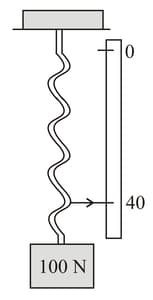

Find the value of in terms of spring constants for this to happen.
If and and acceleration of the elevator is , find the tension in the middle spring in the final equilibrium with respect to the lift.
The tension in the given spring is

A spring balance and a physical balance are kept in a lift. In these balances, equal masses are placed. Now, if the lift starts moving upwards with constant acceleration, then,
The masses of and , respectively, are connected by a massless spring, as shown in the figure. A force of acts on the mass. At the instant shown, the mass has acceleration . What is the acceleration of mass?

